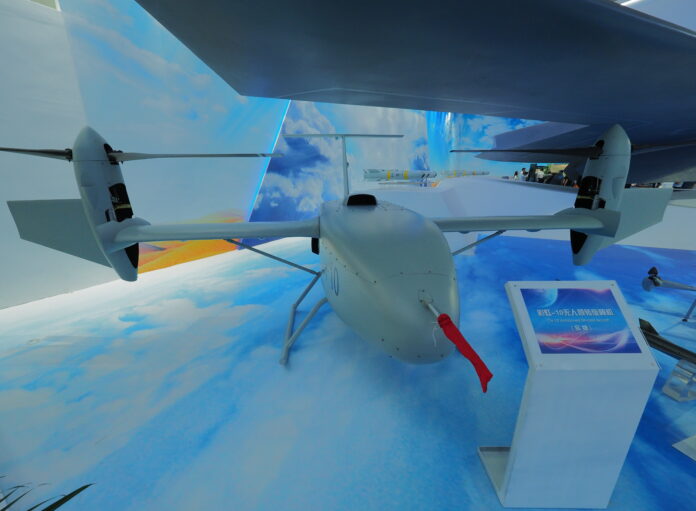State-owned defence prime China Aerospace Science and Technology Corporation (CASC) announced on 21 January that it is planning to build a larger prototype of its Caihong 10 (CH-10) fixed-wing vertical take-off and landing unmanned aerial vehicle (VTOL UAV) at its new automated manufacturing facility in the eastern Zhejiang Province.
The company also noted that the maiden flight of the CH-10 technology demonstrator occurred in 2019 and has been undergoing reliability testing since. Further validation of the basic design is also planned, with the knowledge gained being used to inform development of a larger and more capable model, CH-10 programme team leader Wen Xi said.
According to official specifications, the CH-10 has a maximum take-off weight (MTOW) of approximately 350 kg in its present state of development and is powered by a main engine housed within its fuselage, which powers twin-bladed propellers on wing-mounted nacelles and enables it to achieve a maximum level flight speed of more than 300 km/h and operate at altitudes of up to 7,000 m. The air vehicle is also able to transition to helicopter mode mid-flight and perform sustained hover in gusty wind conditions of over 10 m/s.
CASC is understood to be pitching the CH-10 at potential ship-based applications, given the limited deck space that precludes the use of larger fixed-wing UAVs.
If successfully commercialised, the CH-10 will expand the product portfolio of the Cai Hong UAV Base in the Taizhou Bay Circular Economy Industrial Agglomeration Zone. The facility was commissioned in December 2019 and has since manufactured an undisclosed number of CH-4 and CH-5 medium-altitude long endurance (MALE) UAVs for domestic and international customers.
The Cai Hong UAV Base is the latest among several unmanned aircraft production lines that the company has commissioned within the past 10 years, and is designed to produce man-portable micro-UAVs to satcom-enabled, long-range MALE-class armed reconnaissance platforms.
Local reports suggest that the facility could eventually produce up to 200 “medium and large” UAVs annually.
by Jr Ng













